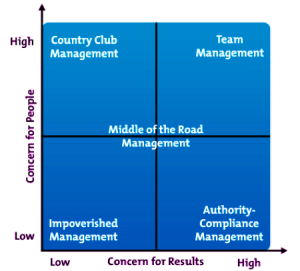A vision is clear, specific and definite assessment of future. Leaders form vision to achieve strategic developments for the organization.Success in leadership always begins from vision.
(Forbes 2015)
In my opinion vision is necessary because it gives a compelling image of future, where exactly you want to see yourself and your organization in future. According to Michael Hyatt (2015) it will help you form right strategy to achieve your targets.
As I am seeking to begin a fruitful career in hospitality industry, so the one name in the hospitality industry that I always look up to is Bill Marriott CEO of Marriott International. There is nothing showy about him as a leader, but his democratic leadership style and vision targeting strategic progress is commendable. He believes people you serve, comes first. You should treat the employees the way you want to get treat because it will define the way you treat your customers. According to Marriott’s Blog (2008) in today’s time, culture is very unique and strong. So to foster this culture you have to achieve strong customer satisfaction by making your customers happy and offering them bets services.
He is a successful leader leading one of the word’s largest lodging companies from past 51 years. The organization received an award by Ethisphere institute for world’s most ethical company. His core values focuses on pursuing excellence in its operations, embracing change, acting with integrity to serve the world. The group has set high ethical and legal standards leading to sustainable operations.
(Palavi07culc 2015: Blog 1)
After doing research for my previous blogs I came to know more about different types of leaders including authoritative, affiliative and democratic leader practicing autocratic, democratic or Laissez-Faire style of leadership.
Bill Marriott is know for practicing democratic leadership style He believes every individual working in the organization at different levels are leaders and says communication with the employees is really important and beneficial for the organization. His vision states, ’They should be treated in a way you want to get treated.’
(Pallavi07culc 2015: Blog 3)
The above video shows Bill Marriott talking about his leadership journey on the 85th anniversary of Marriott International Hotel.
I am writing this blog to evaluate my leadership track while studying in CULC and check whether I have certain skills encouraging me to practice leadership. During all my past terms I never ignored the feedback I received, whether its from my tutors or peers. Although my tutor’s feedback is almost similar to the one I got from my peers. According to my peer feedback I always showed traits of democratic leadership style allowing them to participate in every small decisions and tasks. And I did succeed in every group work or project and I also showcased my leadership skills whenever I got a chance to become a leader.
According to the feedback I received from my tutors, they say I showed some traits of democratic leader and I usually keep my clam in stressful situations. I never got aggressive or panicked on my team members. The feedback helped a lot to work on my weaknesses and improving them for my own good. It gave a better understanding of leadership and the skills it required to achieve success in future.
On the basis of feedback I got and skills possess, I would like to become a democratic leader practicing democratic leadership style. According to Guthrie (2012) Democracy is a creative form of leadership. It involves certain skills including forming vision, strategy, planning, focus and learning. The core of my degree of MBA in global business and the constant feedback from my colleagues and peers helps me to understand and develop such skills. The workshops provided by CULC are really good. I got an opportunity to learn a lot from them and it also helped me to work on my weaknesses.
In my views leadership cannot be learned or acquired, it comes to you on the basis of traits and skills you posses in yourself. These things encourage you to practice leadership for specific role, department or a company. Leadership is all about your mind state and the approach you adapt for your work, which leads to the valuable outcome making you a leader. It’s not about the position you hold.
REFERNCES
- Forbes, (2015) Leadership Success Always Starts With Vision. [Online] available from <http://www.forbes.com/2009/07/29/personal-success-vision-leadership-managing-ccl.html >[5 September 2015]
- Verma, P., (2015) Leadership and Ethics [Online] available from< https://pallavi07culc.wordpress.com/2015/08/19/leadership-and-ethics/ >[5 September 2015]
- Verma, P., (2015) Most effective Leadership & Management styles & Approaches [Online] available from <https://pallavi07culc.wordpress.com/2015/08/28/most-effective-leadership-management-styles-approaches-2/ >[5 September 2015]
- Hyatt, M., (2015) Why vision is more important than strategy [Online] available from < http://michaelhyatt.com/why-vision-is-more-important-than-strategy.html >[5 September 2015]
- Marriott, B., (2008) My vision for the future of Marriott.. our corporate culture [Online] available from < http://www.blogs.marriott.com/marriott-on-the-move/2008/05/my-vision-for-the-future-of-marriott-our-corporate-culture.html?cid=6a0120a73c0f0d970b016302d49b8d970d#comment-6a0120a73c0f0d970b016302d49b8d970d >[5 September 2015]
- Guthrie, D., (2012) Creative Leadership: Democracy [Online] available from < http://www.forbes.com/sites/dougguthrie/2012/07/12/creative-leadership-democracy/ >[5 September 2015]















